15 front garden ideas to make a stylish first impression for your home
Your front garden ideas are so important if you want guests to get a great first impression of your home — plus they can draw out and highlight the design of your house too. Take a look at our beautiful selection
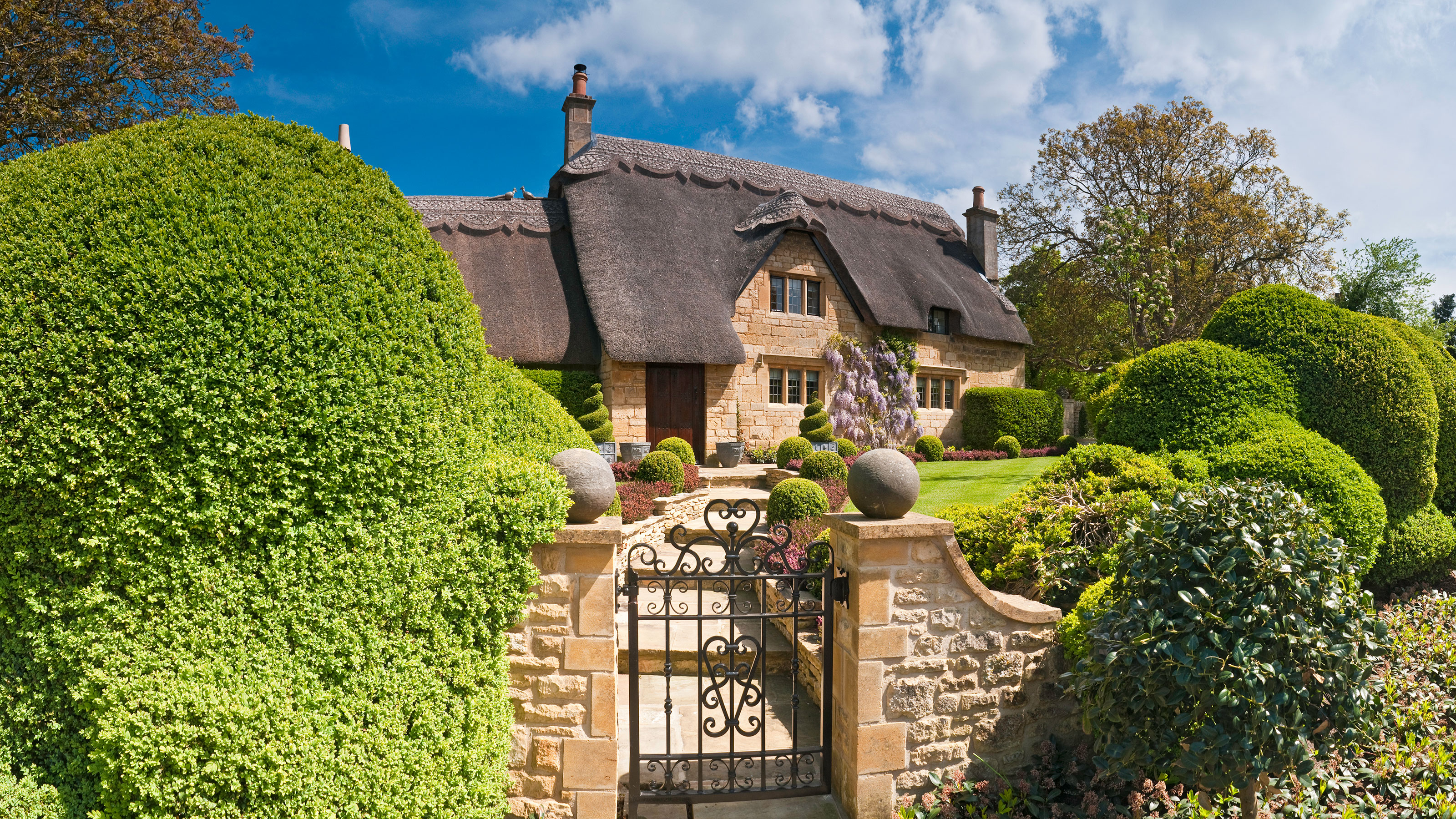
Getting your front garden ideas right is way more important than many people realise — after all, kerb appeal is one of the most sought-after aspects of any property.
Regardless of whether you’re renovating, extending or building your dream home, garden design is the perfect way to set the tone of your house for visitors, friends and family alike.
Front gardens are often expected to do far more than just look good — they are often multifunctional spaces, and when it comes to their design, you need to focus on practical considerations, such as parking and access for services, as well as designing a welcoming and engaging sanctuary space which makes your house a home.
Take a look at these ideas for ways to create a front garden with impact and ensure your home has the best kerb appeal on the street.
Designing your front garden ideas
When it comes to designing your front garden there is much to consider. Not only will your front garden need to incorporate a route to your front door, but it may well need to accommodate your driveway ideas, as well as provide space for storing the less attractive, yet necessary, items we all have, such as multiple bins.
Of course you will also want to ensure that garden looks good and that often means combining planted areas with paving, gravel or other materials suitable for driving or walking over.
Aim for a good balance between the two and try to find ways of using materials and planting that will complement those used on the front of your house, as well as bearing in mind the overall style of your property.
Bring your dream home to life with expert advice, how to guides and design inspiration. Sign up for our newsletter and get two free tickets to a Homebuilding & Renovating Show near you.
1. Soften straight edges with planting
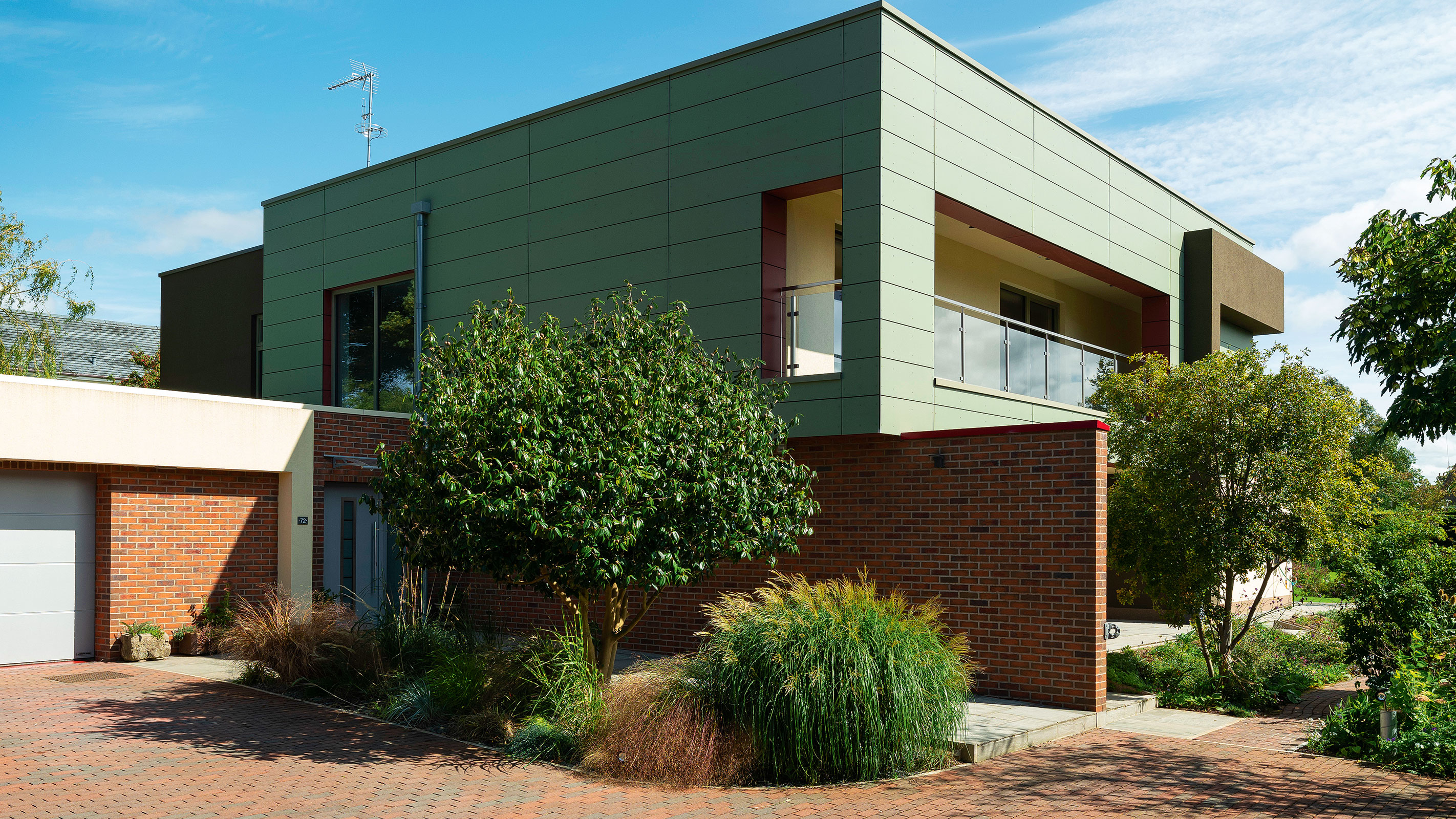
Contemporary self builds often feature lots of straight lines and sharp angles which can make for some really stunning designs. However, in order for the overall look not to feel harsh or sterile, it can be a good idea to weave some softer, planted areas into your front garden scheme.
This striking new contemporary eco house features a design based on two simple boxes, one on top of the other and has been clad with cementboard. In order to soften the approach, a combination of trees and frothy grasses has been used.
2. Pair contemporary design with clipped topiary
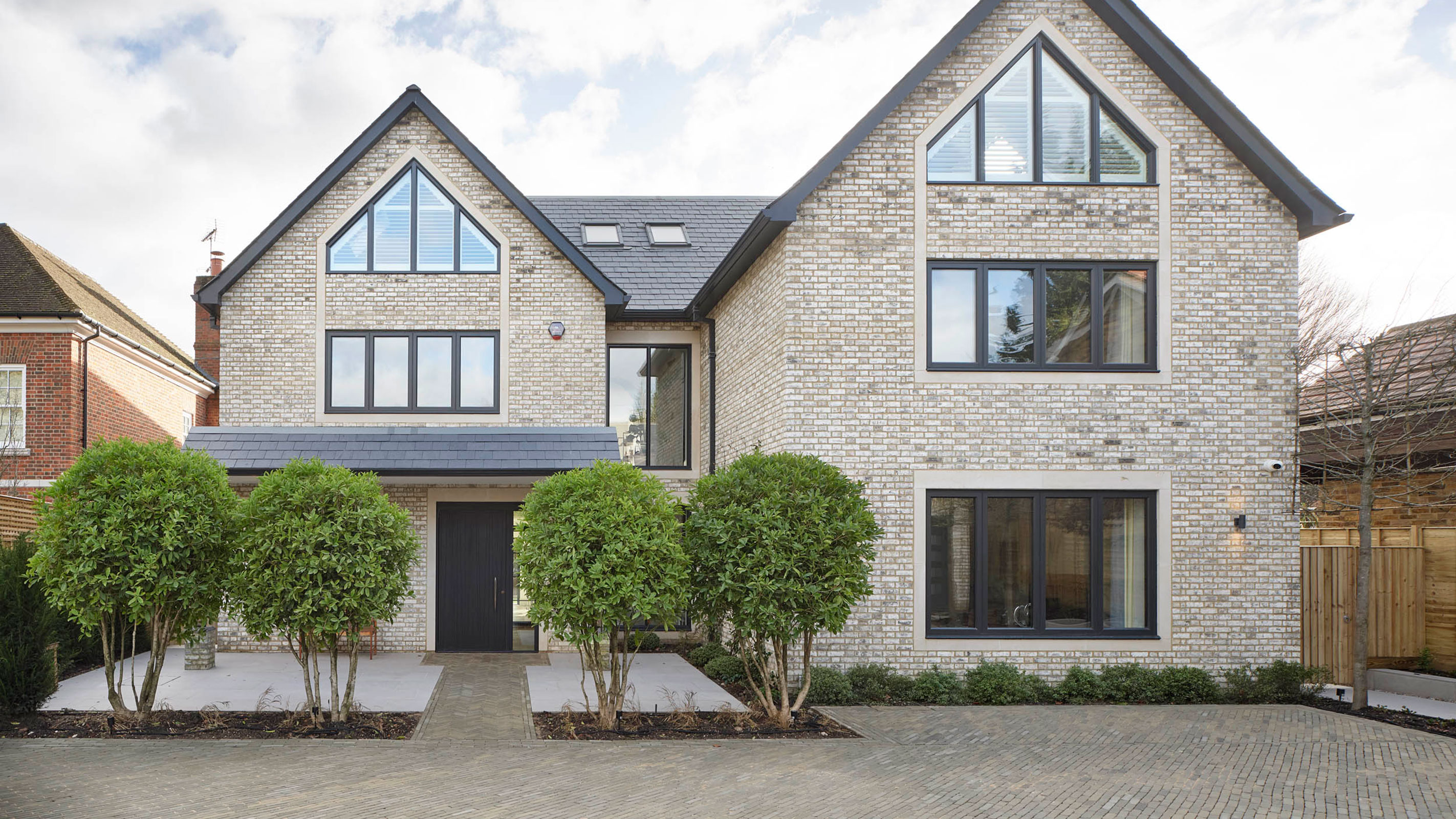
While smart topiary is often thought of as the reserve of traditional-style homes and formal gardens, it also works really well in the front gardens of contemporary houses, where its restrained appearance complements the simplicity of the form of these types of home really well.
Here, neatly clipped trees have been shaped into a ball form. Not only do they provide privacy and a pop of colour, but they also counterbalance the angular form of the overall design.
3. Frame a pathway to draw the eye to the door
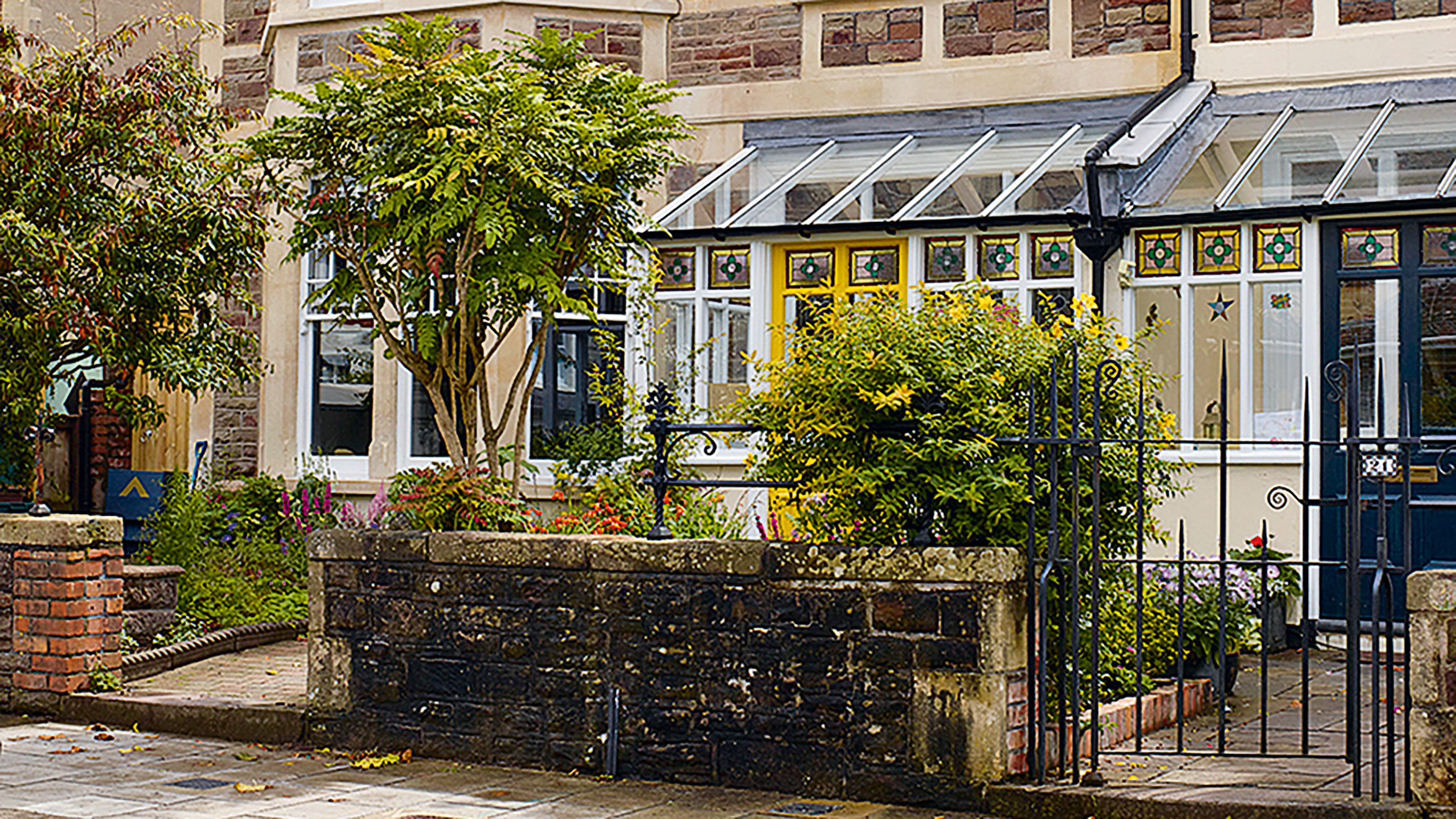
If your home is street facing it is crucial to get your front garden design spot on in order to both maintain privacy from within as well as to set the tone of the whole property. Your front garden in this situation is essentially the buffer between the public area of the street and your own, private zone.
The front garden of this renovated semi-detached Edwardian house has been planted with a selection of small trees and bushy shrubs in order to protect it from prying eyes as well as framing the pathway that leads up to the front door.
4. Give a contemporary house a Mediterranean feel
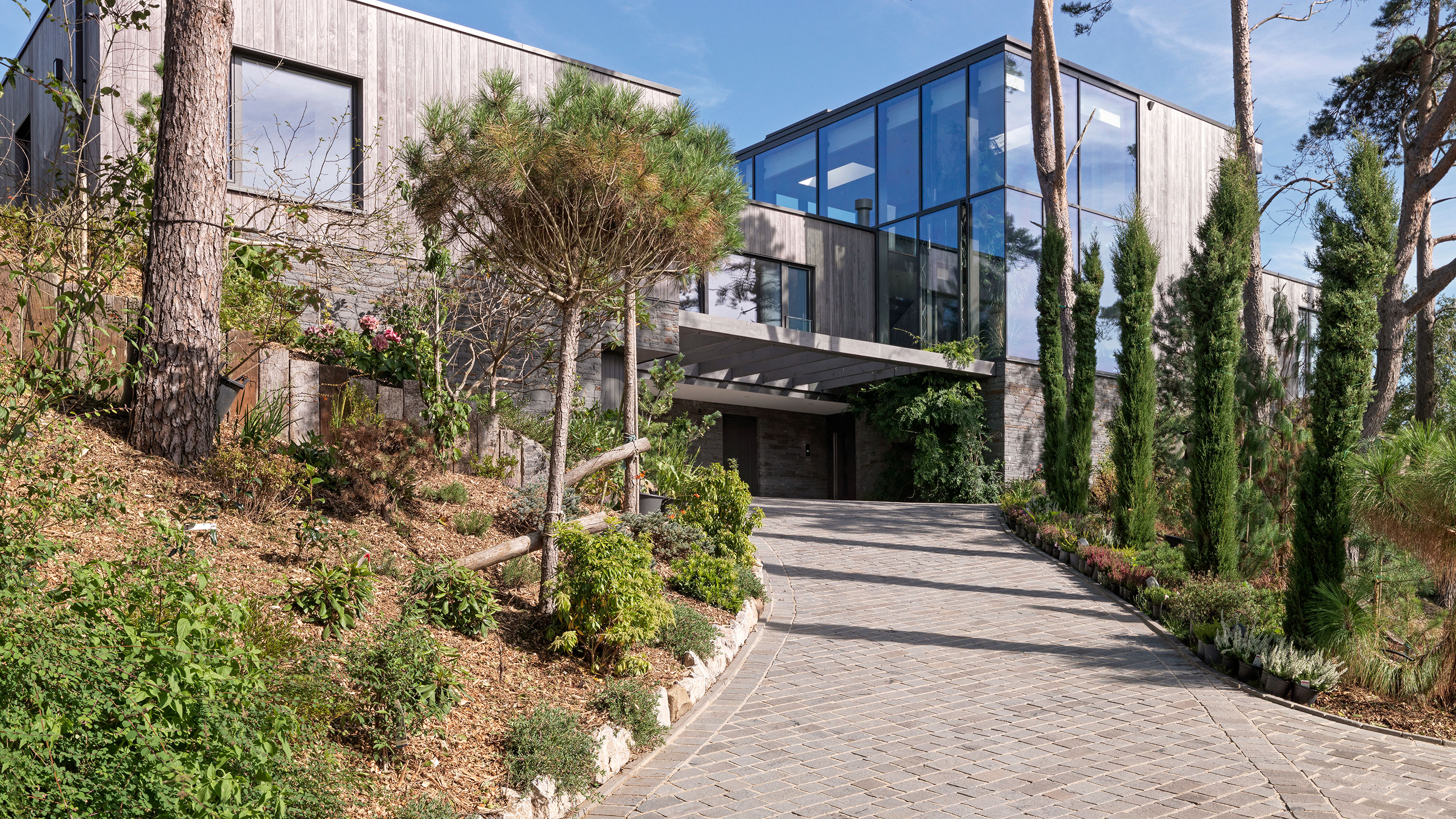
Coastal properties often really benefit from a Mediterranean-style planting scheme as the climate works well with the same kind of species used. A Mediterranean front garden also looks great with contemporary homes.
This stunning self build is located on a hillside plot, with views of the coast, in an Area of Outstanding Natural Beauty in Wales. The planners requested a defined landscaping plan that used native species to allow the house to blend in. Pine trees, heather and a range of plants sourced from Italy have been used.
5. Use lighting and plants to lead the way
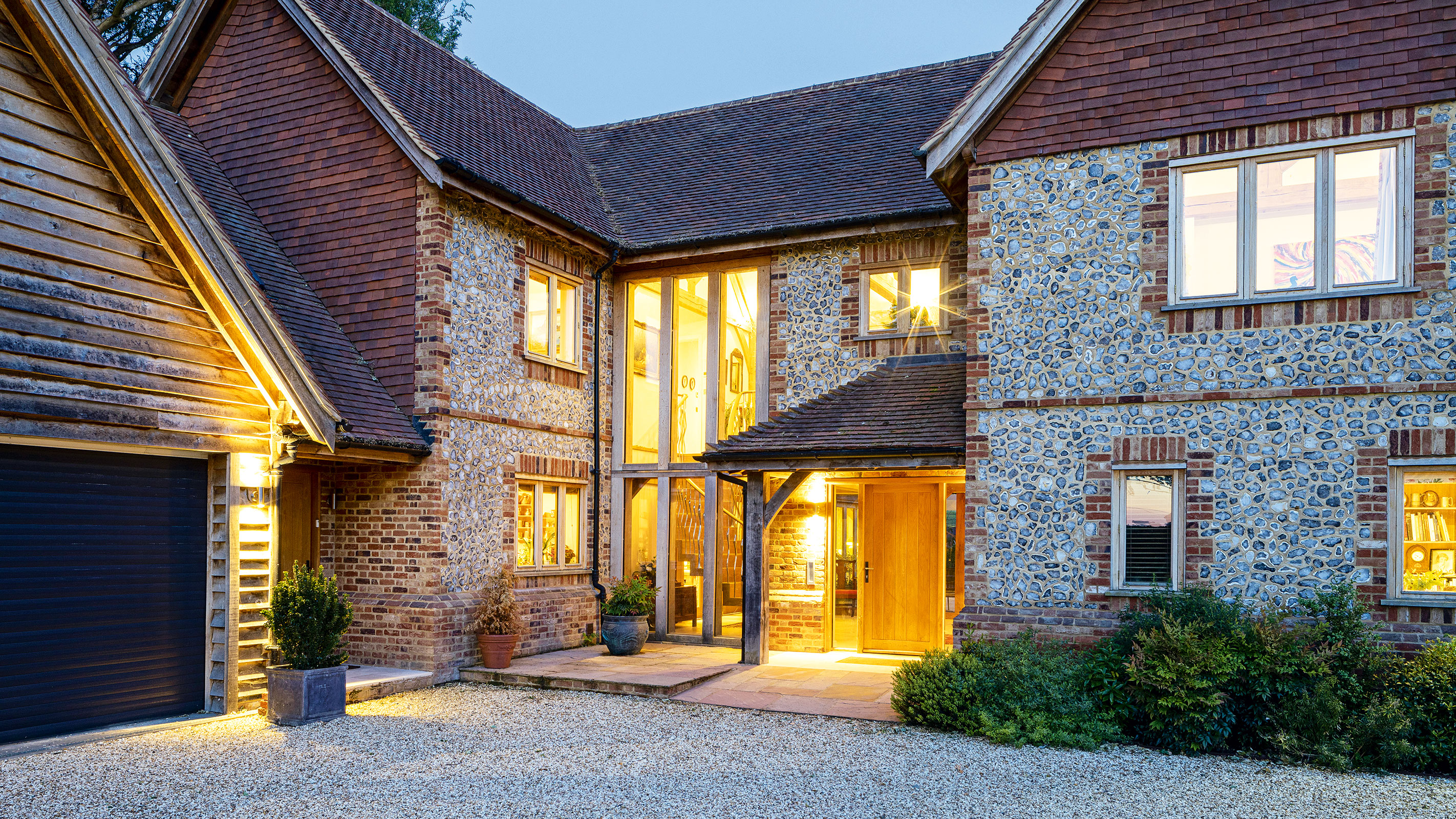
If you have gone to great lengths to design a welcoming front entrance to your home you will want to do all you can to ensure that it really stands out. The best ways to do this are through using great outdoor lighting ideas and the right plants.
This oak frame self build, designed and constructed by Oakwrights features extensive glazing, flint and exposed oak. The front garden area features smart shrubs that line the base of the walls, a selection of planters and some brilliant lighting to allow the beautiful oak frame porch to shine.
6. Soften an expanse of driveway with grass
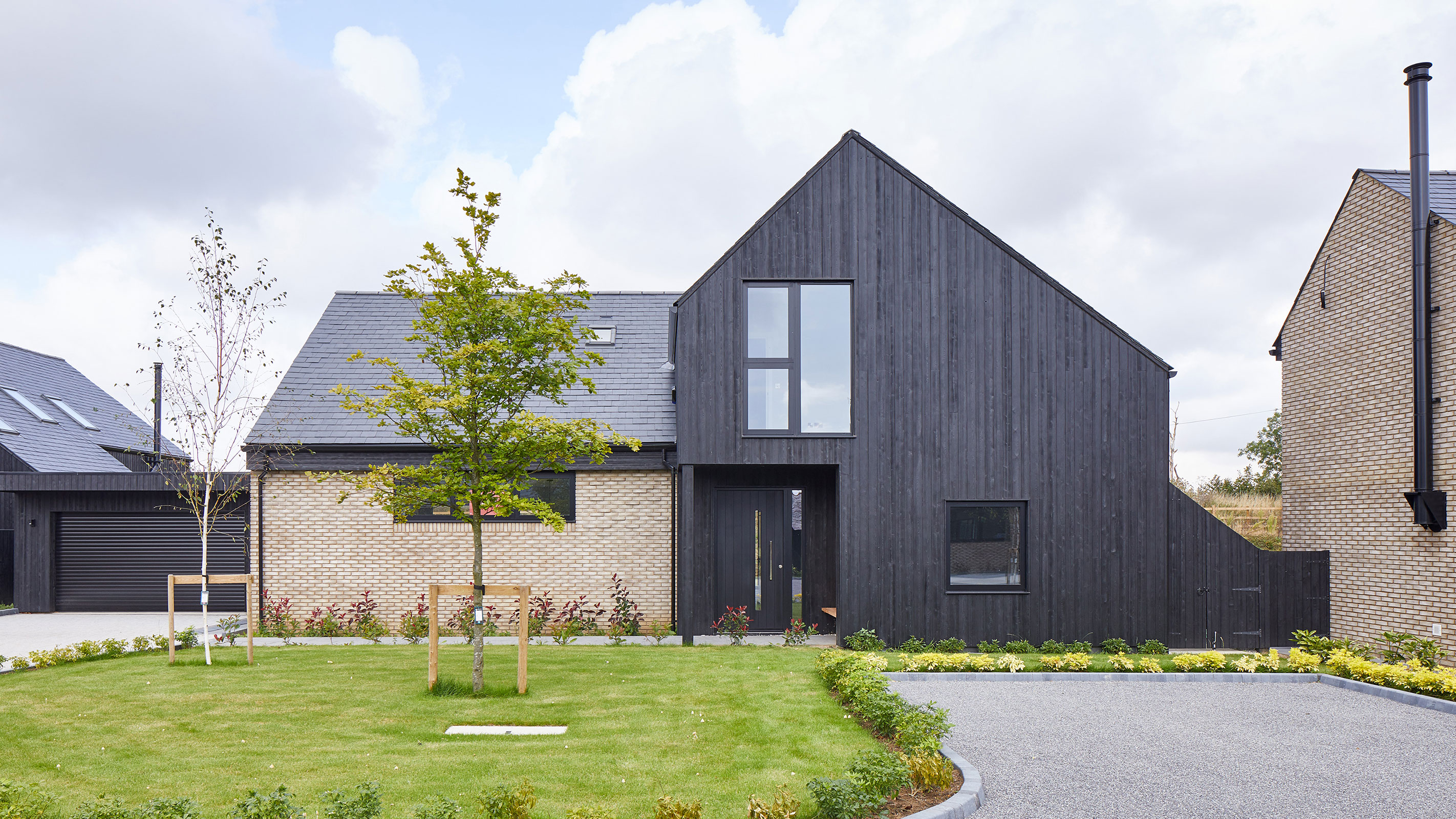
While large front garden driveway ideas are useful, expanses of tarmac, block paving and even gravel can look a little overwhelming and lacking in character. For this reason, it is a good idea to offset these areas of hard materials with some greenery.
For the front garden of this contemporary house, the driveway is wrapped in an area of neat lawn, finished off with low box hedging. A slim tree in the centre of the lawn adds further interest to the overall approach.
7. Locate a car port in your front garden
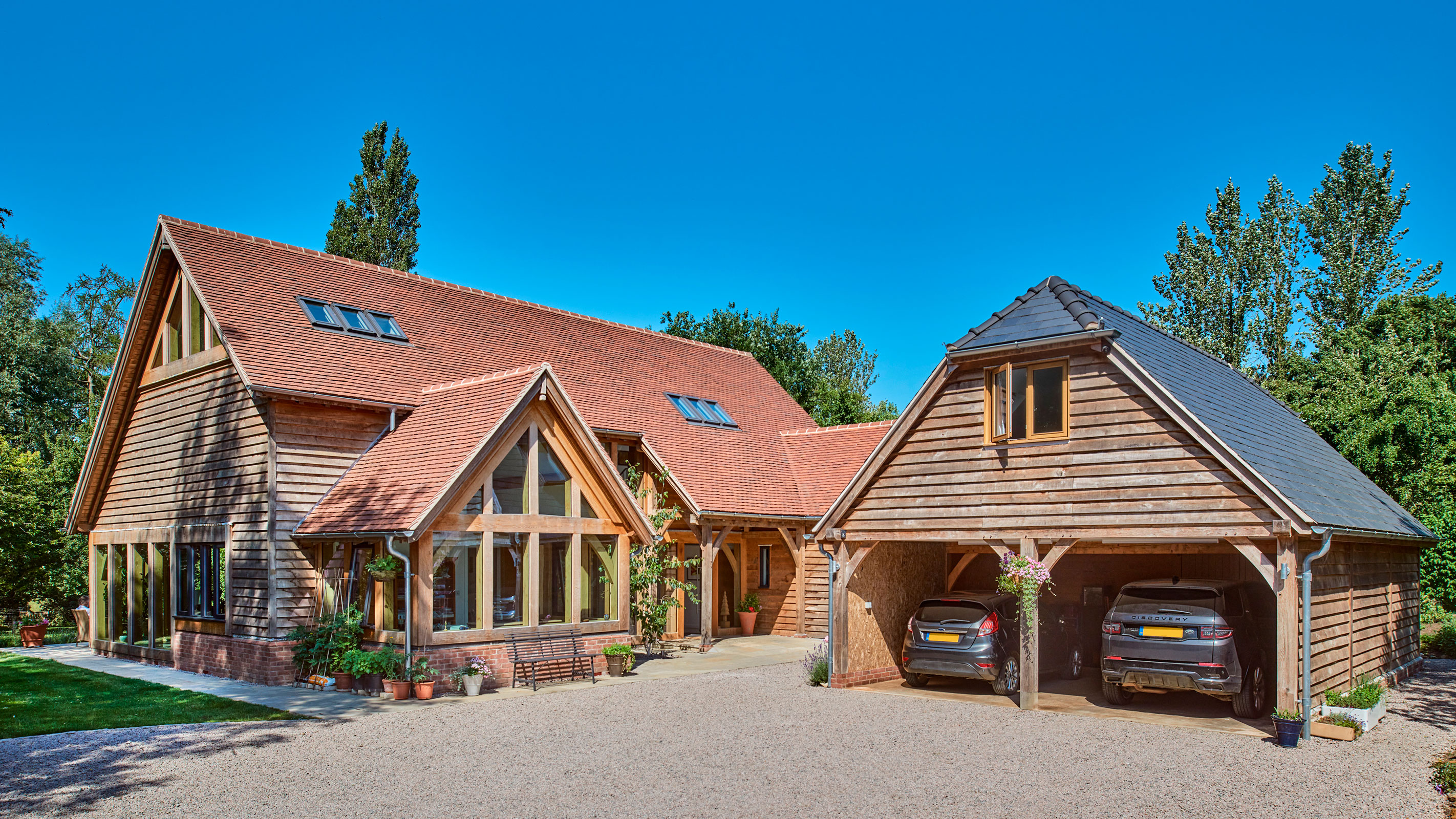
The right carport ideas can really make or break a front garden — structures that are too big or badly designed can ruin the entire kerb appeal of a house.
From basic overhead shelters to sturdy oak frame buildings that also combine living space above, carports come in all kinds of designs. Carports can be single, double or even offer space for more vehicles. Some also combine sheds for storage.
Be sure to choose a design that complements the style of your house — as has been done here. Both the house and the carport, both by Oakwrights, are constructed from oak frame and feature featherboard cladding.
8. Understand colour psychology
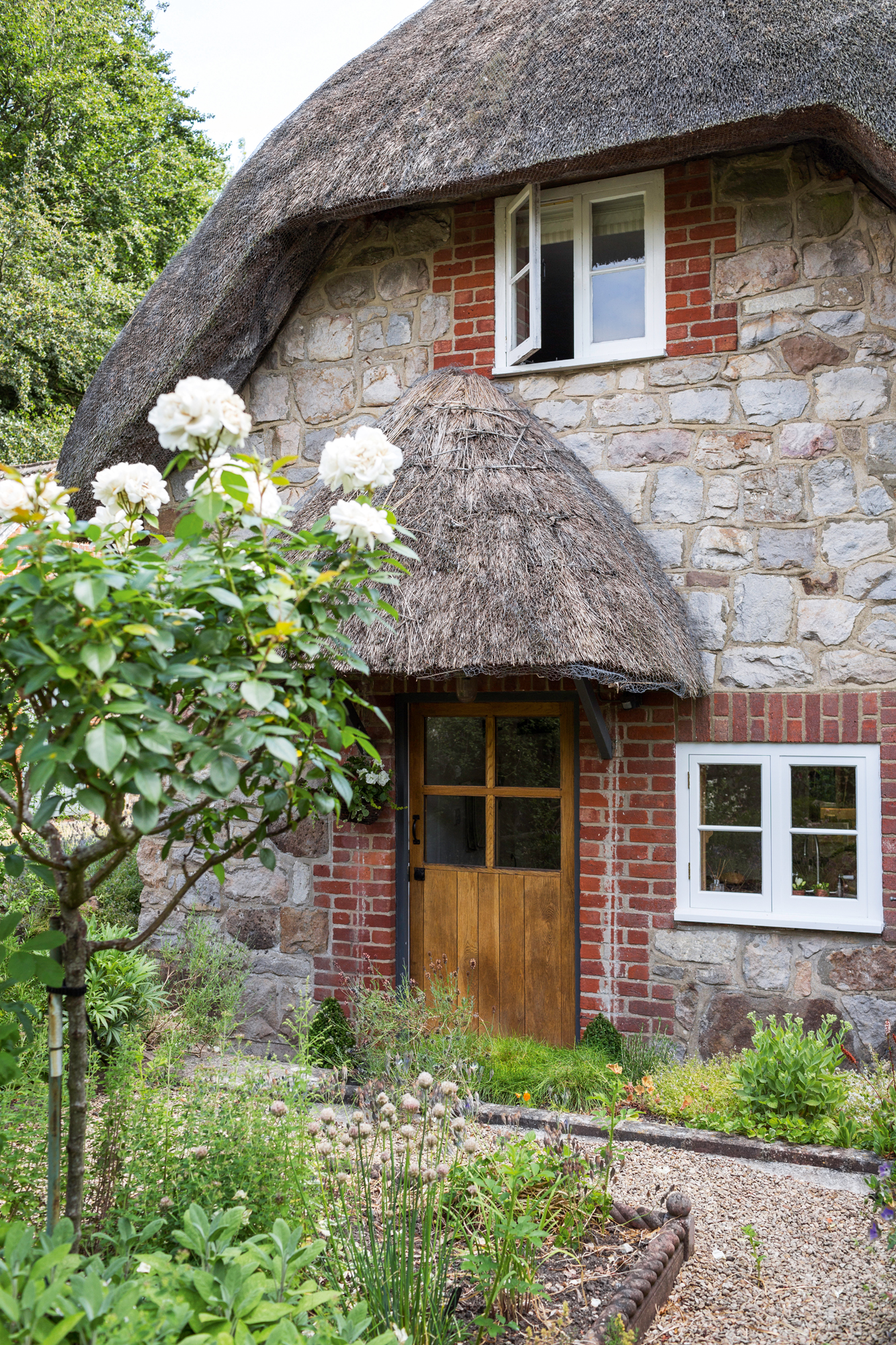
From a colour perspective for your front garden planting, you may want to think about colour psychology and the role it plays in creating a welcoming first impression for your home.
- Green and white as a combination are ‘slow colours’ meaning guests will take time to subconsciously read the landscape but also understand where you want them.
- Dark foliage plants, reds, purples and silvers are all colours which stimulate the brain and make people uncomfortable, so unless you want your guests turning up feeling uneasy, think twice before including these in your design.
- Variegated plants in front gardens are distracting and highly decorative, so perhaps a little overstimulating for a front garden design.
- Adding colourful flowers is a great idea for creating a cheerful front garden, but in a small space, be weary of how many hues you're introducing. A simple colour palette with one or two accents may be more effective than a colourful but chaotic display.
Play around with height and structure in your planting design too. Think about what can be seen over your garden wall or fence, to ensure that the front garden looks just as good for your neighbours as it does for you.
9. Research the best driveway materials
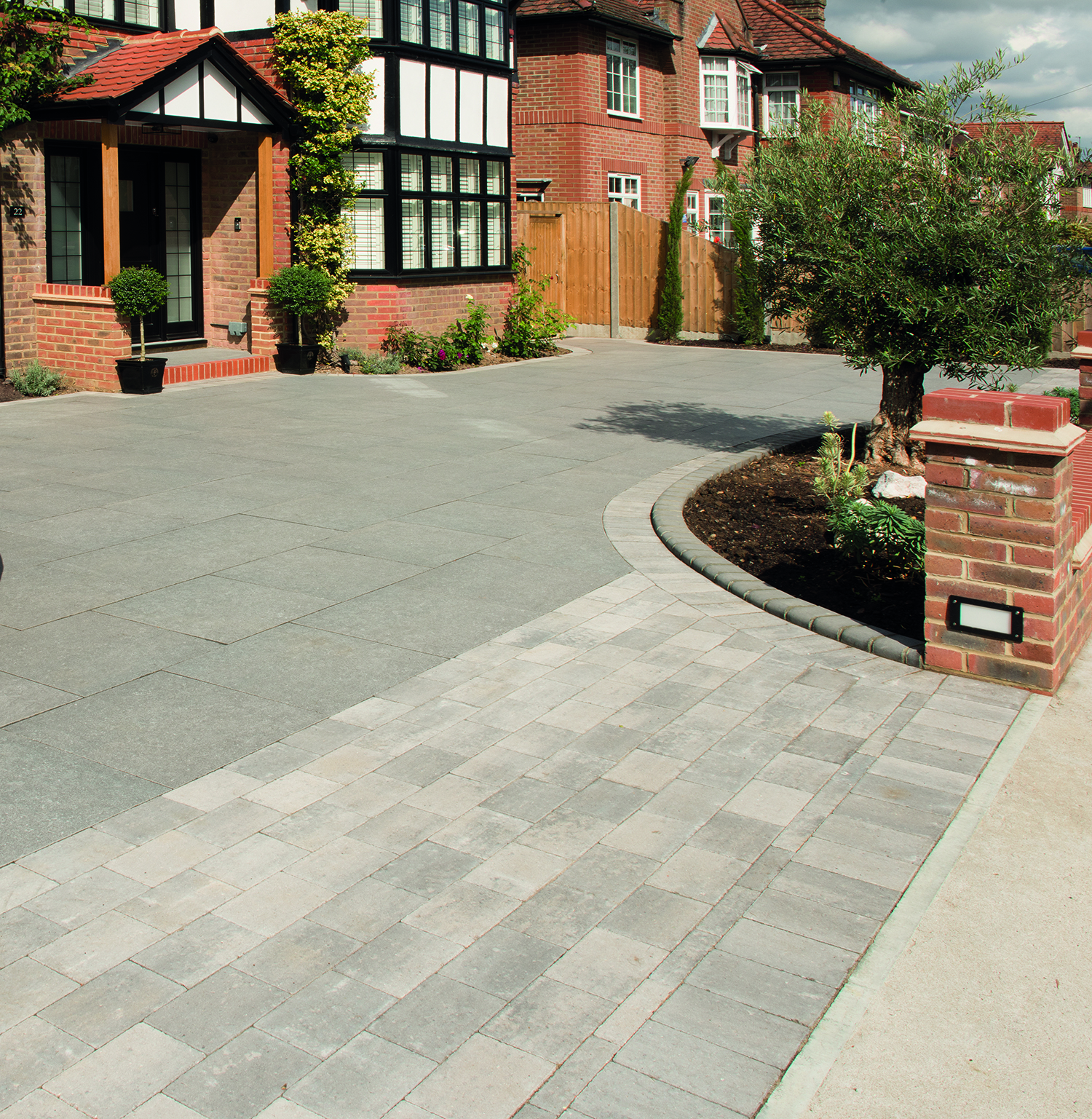
One question you’re going to have to answer early on is whether you are including parking in the design. If your house is on a wide, leafy street with enough on-street parking then, for the sake of the environment (and if the planners allow), leave the cars on the road and keep the garden for plants.
Unfortunately many of us don’t live on such roads, and provision for parking may also be a requirement when applying for planning permission for a new home — as such you may require a different approach.
If cars are to be parked on the garden then it’s not game over for living plants. If possible, don’t be tempted to block pave over the entire front garden — plenty of plants will live with parking, so modern drives can combine parking and green functions.
When choosing a material for driveways, from block pavers to tarmac and gravel, think about it in tandem with your paving choice and ensure that the two not only work together, but create a contrast that stops the driveway feeling one-note.
Gravel is one of the cheapest choices for a driveway, however, it remains popular as it acts as as a deterrent to would-be burglars entering your property as it makes a noise underfoot.
10. Use clever storage to control clutter
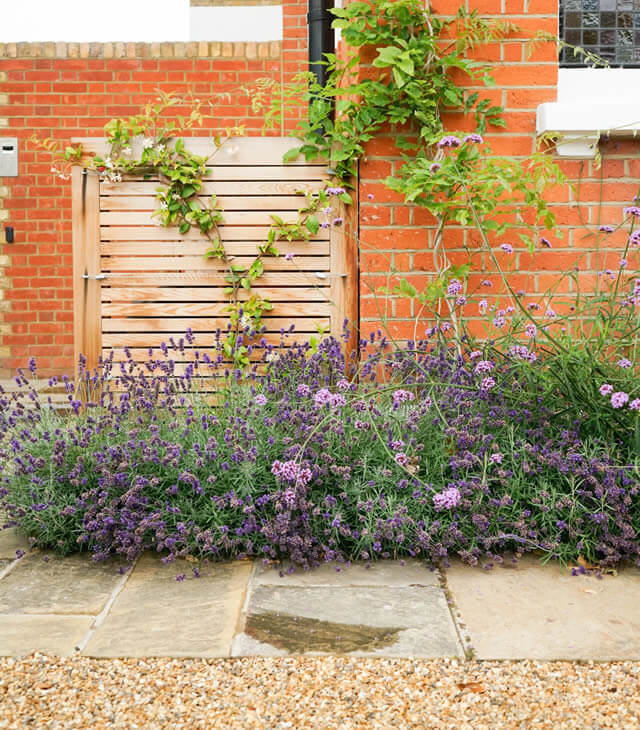
For some properties, front garden storage is essential, especially to preserve your kerb appeal when dealing with the likes of wheelie bins and bikes.
A small shed or storage box, either made from treated timber or plastic, may do the job just fine for your garden, and can be positioned in a way to make sure they're not a dominant feature in your garden, hidden behind foliage or tucked around the side of the property.
Alternatively, opt for a handsome, bespoke design that matches in with your front garden design. You could match a timber storage box, created to your storage needs, with fences and other finishes on the front of your property.
Log store ideas can also be an attractive feature for the front of your home, with many kinds of sizes and styles available.
11. Make the approach interesting
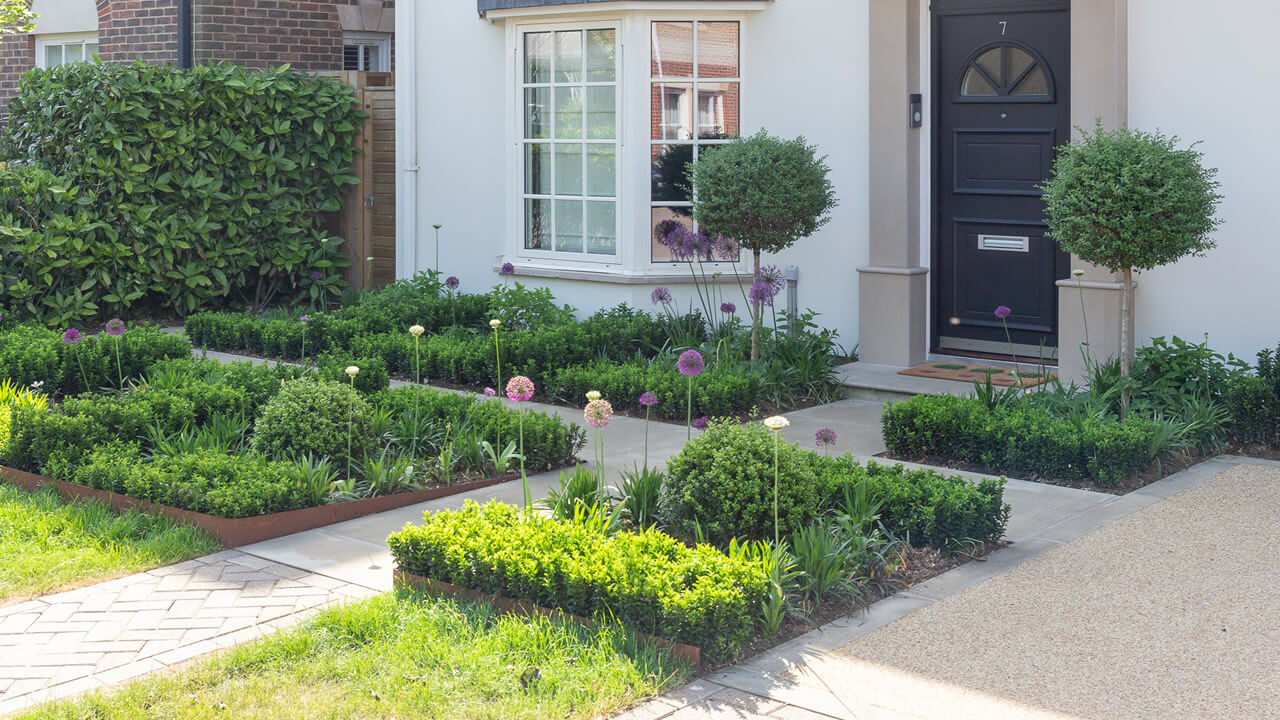
Often, from a design perspective, we want visitors to know the route to the front door and not to feel like they can wander at will. Thinking about the width of paths and access routes, path edging ideas and the size of containers, can direct visitors where you want them to go and avoid a surprise guest wandering in through gates in the garden.
Framing a path with flower beds is a charming way to make your home's entrance feel more intimate, rather than simply merging the driveway with the front of the house. Visual cues such as lighting will also help guests find their way into your home after the sun goes down.
12. Lighting up your entrance stylishly
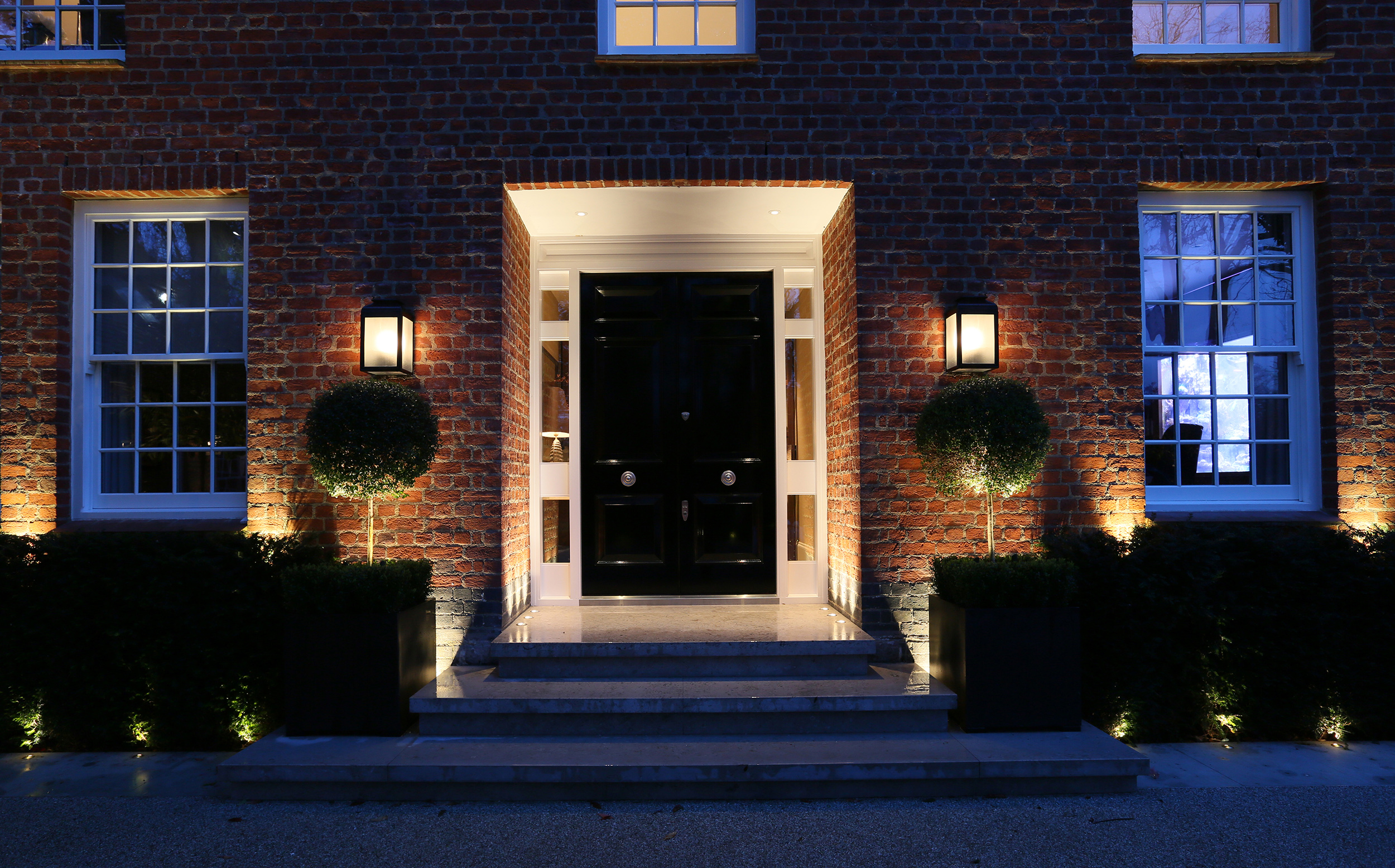
When it comes to front garden lighting ideas, accent lighting is key. While you may look to floodlights on your driveway to illuminate when entering and exiting cars or as a security measure, front garden lighting's main role is to highlight and create night time kerb appeal.
Uplighting on your property will highlight the best of your home's design, but this can also be extending to feature trees in your front garden.
The most functional lighting you'll require are path lights to illuminate the way to your front door, and wall lights to ensure you're not fumbling for keys in the dark.
13. Use walls and fences to define your patch
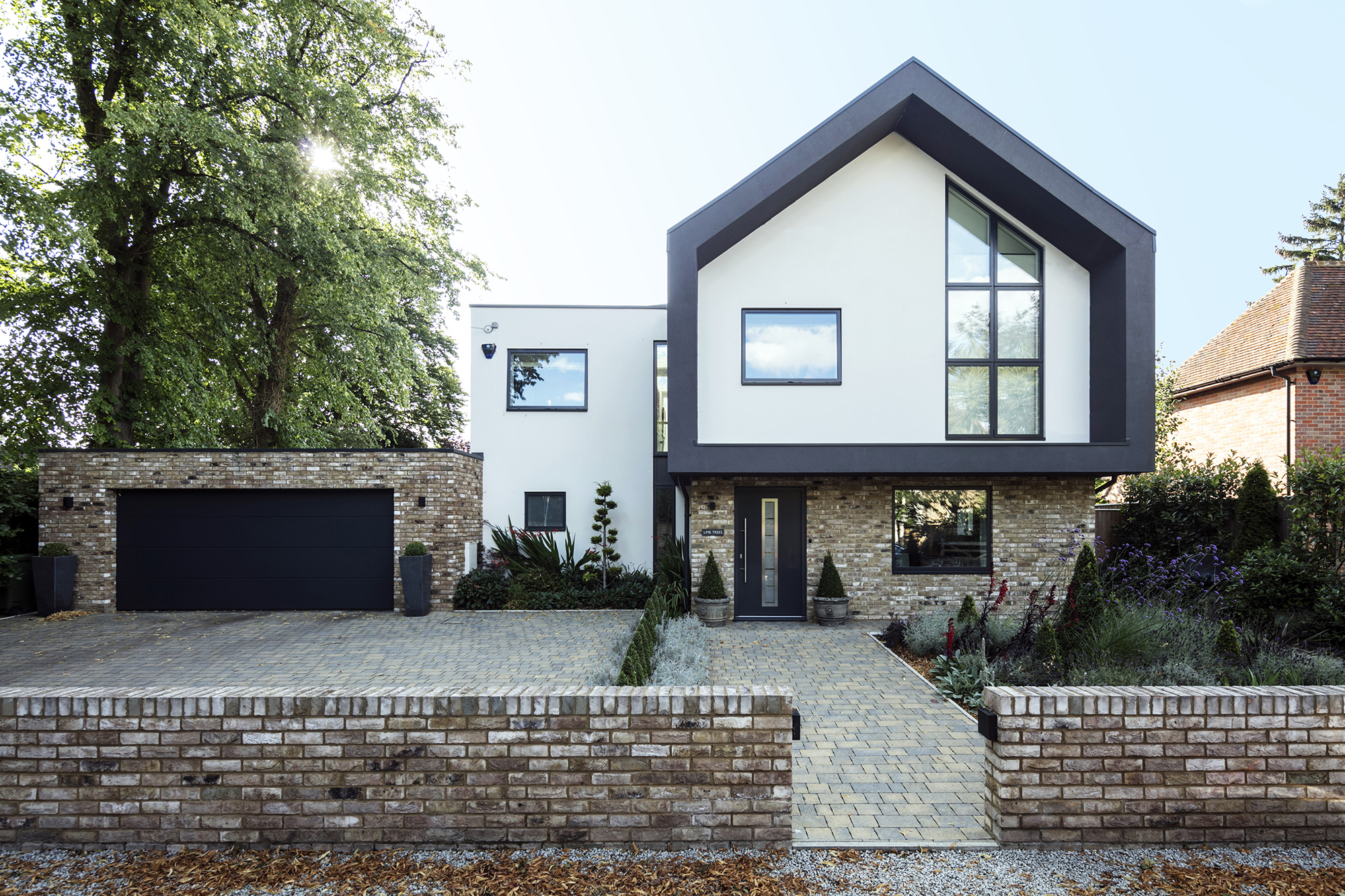
The rule of thumb in the UK is that while back garden fences and walls can be up to 2m high under Permitted Development rights. However, front gardens, or more specifically those next to a highway used by vehicles, can only be up to 1m high without requiring planning permission.
If rebuilding an existing brick wall, try to source bricks that match the style of the house to avoid a jarring look. If it's a period property, this can be potentially achieved by sourcing reclaimed bricks or using services such as brick tinting.
If you want a fence or wall higher than 1m, largely you'll need to apply for planning permission, however, there may be some work around possible. Check with your local authority how they classify trellises for example. Some will count trellis within wall height, some will count them as a temporary structure, and some will only include it within the fence height limitations if attached to the fence.
In the latter case, a freestanding trellis could be erected with its own upright support to offer better screening from the road and neighbours.
14. Use planted screening to avoid overlooking
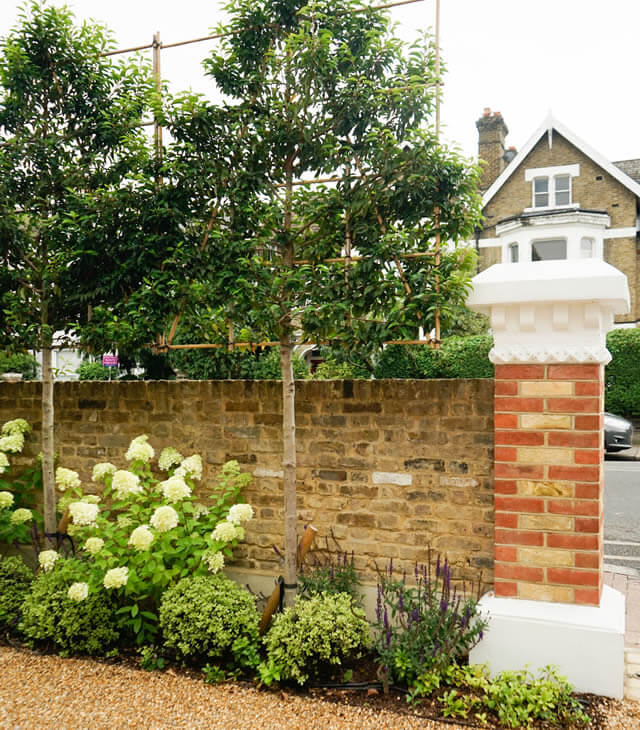
An equally important aspect of front garden design is creating privacy — screening is an important part of keeping your house sheltered and obscuring the view into your home.
Evergreen trees or shrubs are often a go-to, but these can seriously reduce light levels, so be selective and use only in a situation where the loss of light is worth the evergreen nature of the plant.
Creating privacy doesn’t preclude other planting advantages either. Many twiggy trees and shrubs not only have wonderful flowers but also pleasant seasonal autumn foliage, fruits and or interesting winter bark. One of the best small trees with many variations to choose from is the Malus.
Also consider how your front garden planting will help to screen your view of the road outside, as well as reducing road noise. Shelter belts of mixed planting (small trees, large shrubs and herbaceous plants) can, when planted as a deep border, reduce sound levels and buffer some passing noise, too.
Some trees are also good at purifying the air in busy urban environments with lots of vehicle traffic — look at Alders or Platanus (commonly known as the London Plane) in these situations.
If you're looking for planting ideas to overcome the fence height restriction set out by Permitted Development, pleached hornbeam trees are a popular idea, trained to a specific height and shape.
15. Choose the right plants for your style of house
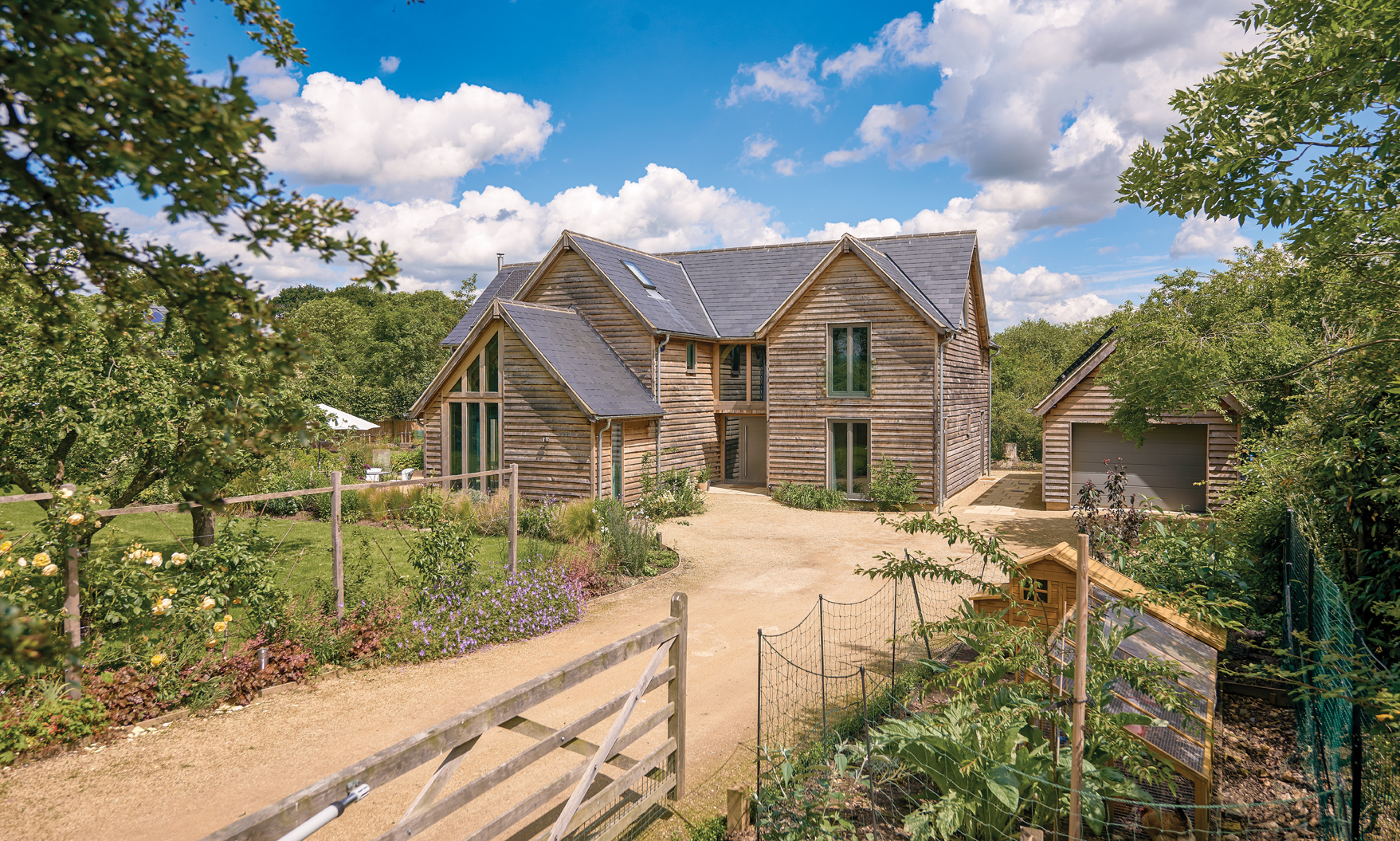
Give some consideration be given to the style and age of house you live in when designing a front garden. This is particularly true if you have self built a traditional timber structure or been particularly mindful of a vernacular style.
Think about your planting and how it will complement the external appearance of your new home will make the garden sit more comfortably with the house and add kerb appeal.
Georgian properties are often accompanied by Hornbeam (Carpinus) hedging and trees, while traditional timber frame houses commonly sit alongside Yew (Taxus baccata) or Holly (Ilex).
There are no hard and fast rules, and the easiest way to get this right is to spend time walking around your local area and looking at what similar houses have as mature plants.
In general, it's wise to match the garden to the vernacular, but don’t be afraid to try something different if you have a contemporary home or want to stand out.
Paul is an award-winning landscape designer. An experienced designer, his diverse range of work has included everything from small courtyards to large country gardens, as well as public spaces, both in the UK and internationally.
He studied at The Royal Botanic Garden Edinburgh, giving him the opportunity to learn about plants and plant habitats from some of the most knowledgeable and inspiring plantsmen in the world. He created his first show garden at Malvern Autumn Show in 2008, and has since created show gardens at the Chelsea Flower Show and Hampton Court, alongside being invited to exhibit internationally in United States, France, New Zealand, Japan and Australia. (In 2022, he designed The Brewin Dolphin Garden at the Chelsea Flower Show.)
Since 2015, he has been a RHS Gardens Judge and chaired judging at all of the RHS Flower Shows including RHS Chelsea Flower Show. He has also worked with Marks & Spencer and Bradstone to create garden products, and has written for The Telegraph and Homebuilding & Renovating magazine.
